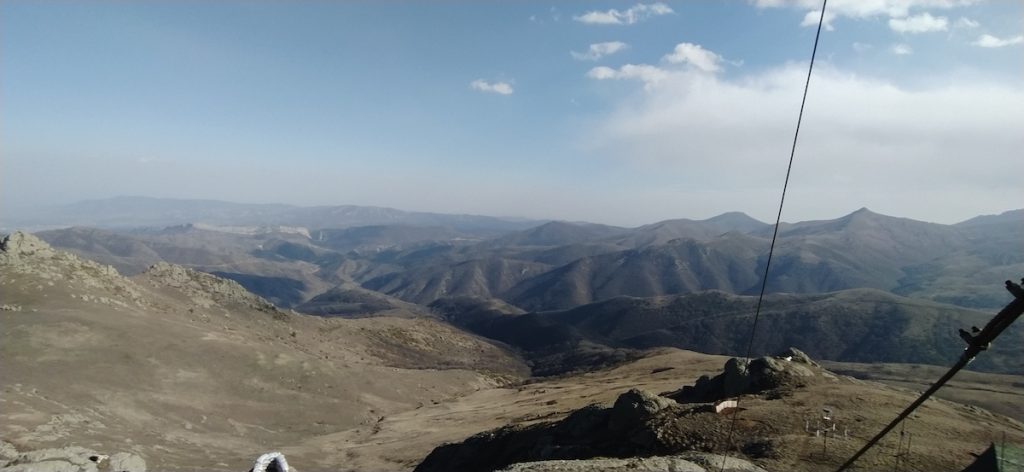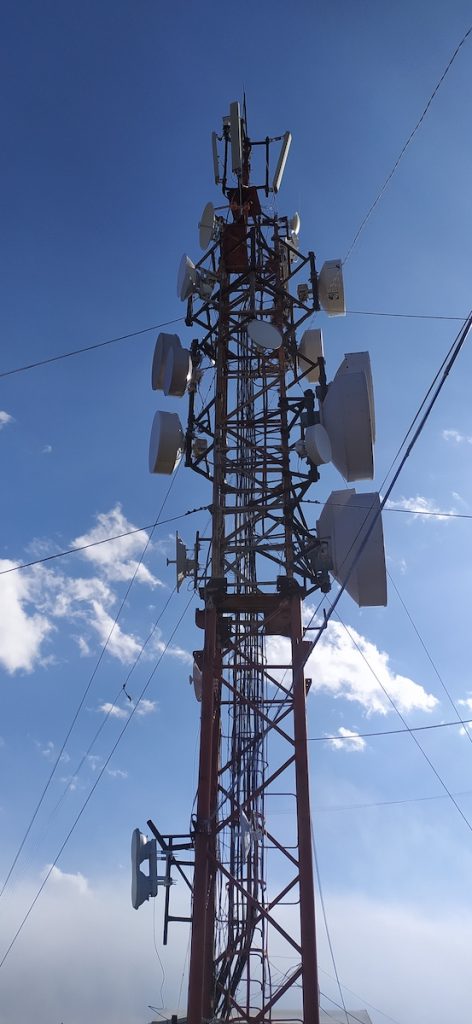Within hand's reach, but miles apart: Armenians and Azerbaijanis in the post-war Karabakh
Armenians and Azerbaijanis in Karabakh
Although the Armenian and Azerbaijani societies live in isolation from each other, in the unrecognized Artsakh (Nagorno-Karabakh) there is a very small group of Armenians who communicate with Azerbaijanis almost every day – at work.
This is the story of one of them – communication specialist Marat Grigoryan.

The language of this communication is universal. This is mainly the exchange of glances, facial expressions, gestures and silence.
When the last Armenian-Azerbaijani war ended [in the autumn of 2020], it was assumed that a period of communication, conversation and joint life of Armenians and Azerbaijanis would come.
However, more than a year has passed since the war, and Armenians and Azerbaijanis continue to communicate with each other either in the language of shooting, by searching and exchanging the bodies of war victims, or merely passing each other by on the roads.
- “People want to get to know each other”: what Armenians and Azerbaijanis discuss in Caucasian Crossroads Facebook group
- Closed railway of my childhood and the Armenian-Azerbaijani conflict
- Blog: Police baton and memories of the First Nagorno-Karabakh War
Marat Grigoryan works two, or sometimes three, times a week outside of his office, located at Karabakhtelecom. Often he has to travel outside Stepanakert (Khankendi). The main directions of his work after the war are Lisagor, Charektar, Khaterk, Martuni and Martakert (Turshsu, Charektar, Khazanriz, Khojavend, Agdere).
In all these areas, Marat works very close to the border, and sometimes even in the neutral zone.
One of the most important places is Lisagor.
“The Lachin road and, in particular, Lisagor are the only link between Artsakh and Armenia. Transceivers and switching devices that provide Internet and cellular communications are located there.

Therefore, during the 44-day war (September 27-November 10, 2020), the Azerbaijanis especially wanted to take the Lisagorsk station”, says Marat, a senior communications specialist at Karabakhtelecom.
This important hub is now controlled by Russian peacekeeping forces. Armenians have the right to work in this territory, to enter and leave, but there are Azerbaijanis around”, says Marat.
There is no communication between them.
Lisagor is located almost in the middle of the corridor connecting Artsakh with Armenia. The Lachin road passes through the northern part of the village, and Azerbaijani positions are located in the south, east and west.
But this does not scare Marat.
“In order to work, my colleagues and I need to go up to the wires. There are places where there is only 15-20 meter distance between us and them [Azerbaijanis – ed.]. That’s where we work.
I am not afraid because I am not able to understand and accept this reality. I have worked on this hill all my life and do not accept the fact that someone from the opposite hill can control me, or that I am in danger because of the mountain ahead of me.
But it is difficult for Marat to talk about communication with Azerbaijanis.
“But you do agree that when two are living next to each other, whether they want it or not, they will communicate?”, I ask.
“There are older people among them who calmly pass by. And then you feel that he, probably, did not want all this to happen. They come and go without any facial expression, without gestures, without words.
But when young people appear near us, it becomes clear that the war passed them by, that they did not see a real fight – they just show us the middle finger or give us a look.
Both Armenians and Azerbaijanis in the area are accompanied by Russian peacekeepers. According to Marat, Azerbaijanis mostly do not get out of cars on these roads and you can only see them behind the wheel.

“Sometimes they look at us. They just watch us cautiously. It is felt that they have never seen an Armenian and they are interested in how we look.
And when they pass, it is not clear why, but we also look at them. We stop working, just stand there and watch.
For so many years we have denied even the fact of their existence, and, therefore, we ended up facing such a tragic reality. But everything will be fine if you strive for good things.
“And we still need to resolve the issue of the status of Artsakh. After that, the future will be determined”, says Marat. “And believing in the future is always good.”
Roads connect people regardless of their nationality. Today, the Lachin corridor is a place where Armenians and Azerbaijanis are very close to each other. Close, but still very far apart.
They can pretend that the people on the opposite side don’t exist. As if there are no Armenians or Azerbaijanis in the world.
In fact, both are very much real, and this reality still needs to be accepted by both sides.
The main thing is for people not to shoot at each other.
Trajectories is a media project that tells stories of people whose lives have been impacted by conflicts in the South Caucasus. We work with authors and editors from across the South Caucasus and do not support any one side in any conflict. The publications on this page are solely the responsibility of the authors. In the majority of cases, toponyms are those used in the author’s society. The project is implemented by GoGroup Media and International Alert and is funded by the European Union




















